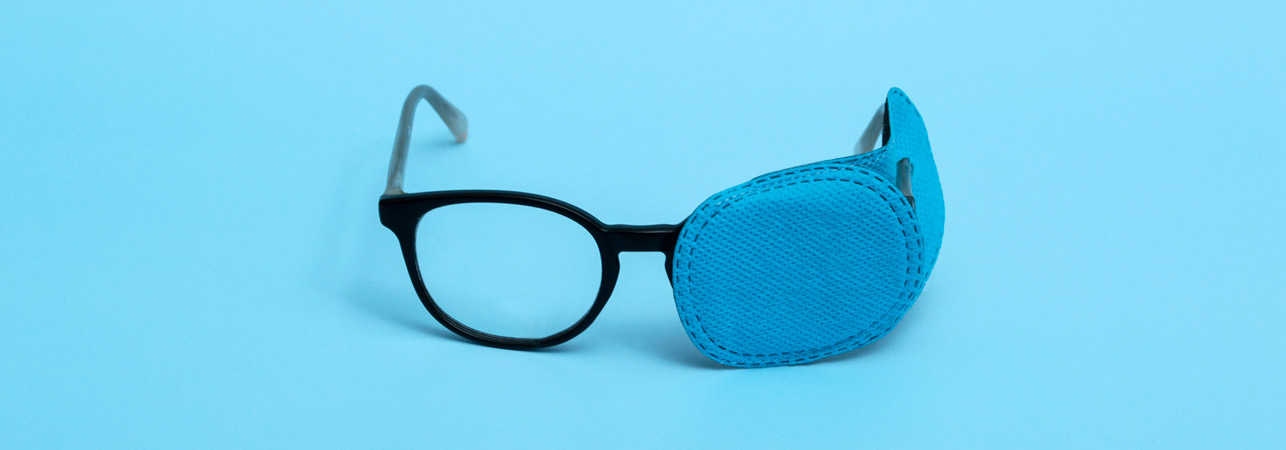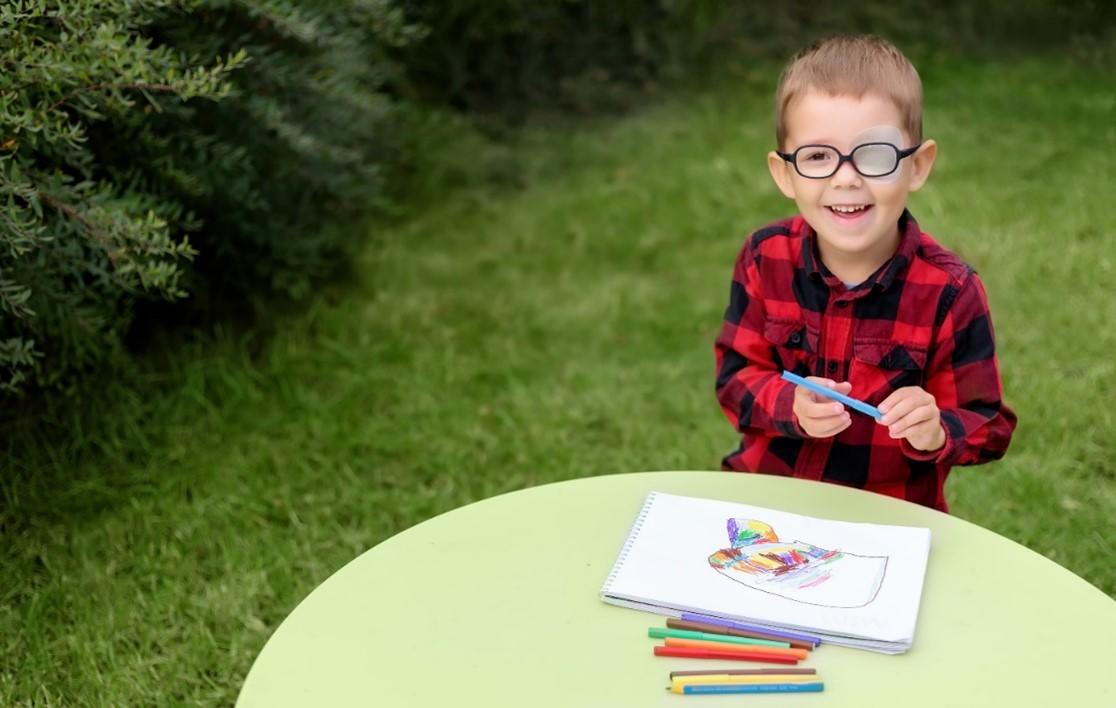Diseases
Amblyopie

Other terms
- Anisometric amblyopia
- Lazy eye
Definition
Amblyopia corresponds to a reduction in the visual acuity of one eye during the development of vision. Up to the age of around 8, the two eyes compete with each other. If the brain receives a lower-quality image from one eye, it will prioritize the development of the better-performing eye, to the detriment of the other. If left untreated, amblyopia can lead to irreversible vision loss.
Causes
The most common causes of amblyopia are refractive disorders and strabismus.
- Refractive disorders such as hyperopia, astigmatism or myopia are responsible for blurred vision.
- Strabismus corresponds to non-alignment of the two eyes, which means that only one eye focuses on the object of interest. The brain will therefore suppress the image received by the other eye to prevent the formation of a double image.
In rare cases, amblyopia may also be due to an obstruction of vision. This can be caused by various disorders such as retinopathy, retinoblastoma, cataracts, corneal opacity, congenital glaucoma or eyelid abnormalities.
Symptoms
Amblyopia is often asymptomatic. Children rarely complain of unilateral visual loss, but as they get older, they may complain of blurred vision. Those around them may notice a strabismus, an eye or eyelid abnormality.
Diagnosis
Early diagnosis is essential for successful treatment, because if amblyopia is not detected and treated early, it can lead to severe and permanent visual loss in the affected eye. It is therefore important to schedule an initial vision screening before the age of 5, or as soon as a visual disorder such as strabismus or nystagmus (involuntary, jerky movements of the eyeball) is suspected.
In young children (under 2 or 3 years of age), tests should be performed to :
- L’éalyse des réflexes pupillaires par photo dépistage
- L’examen de l’anatomie oculaire
- L’examen de la réfraction par un auto réfractomètre
In older children, screening is carried out using visual acuity tests (drawings, letters, numbers) to detect any difference in acuity between the two eyes.
Treatments
Amblyopia is almost always reversible, provided it is treated in time. Once visual development is complete (after the age of 8-10), amblyopia can no longer be corrected.
If amblyopia is caused by an obstruction of vision, this must first be treated to restore vision in the amblyopic eye, for example by eyelid surgery or cataract extraction.
If amblyopia is caused by a refractive disorder, glasses will be prescribed. Depending on the evolution of visual acuity, the ophthalmologist will also propose occlusion treatment, which consists in blocking the vision of the healthy eye in order to stimulate the use of the amblyopic eye. This can be achieved by covering the healthy eye with a bandage or instilling atropine eye drops to blur vision. In the case of strabismus, occlusion treatment comes first.
Frequency
Amblyopia affects between 1% and 4% of children. It is the most common visual disorder in this population. It usually appears in the first few months of life, but can occur in any child under the age of 8.
References
Amblyopie - Hôpital ophtalmique Jules-Gonin
Amblyopie - Problèmes de santé infantiles - Manuels MSD pour le grand public (msdmanuals.com)
Contenu revu et contrôlé le 27.04.2023.

